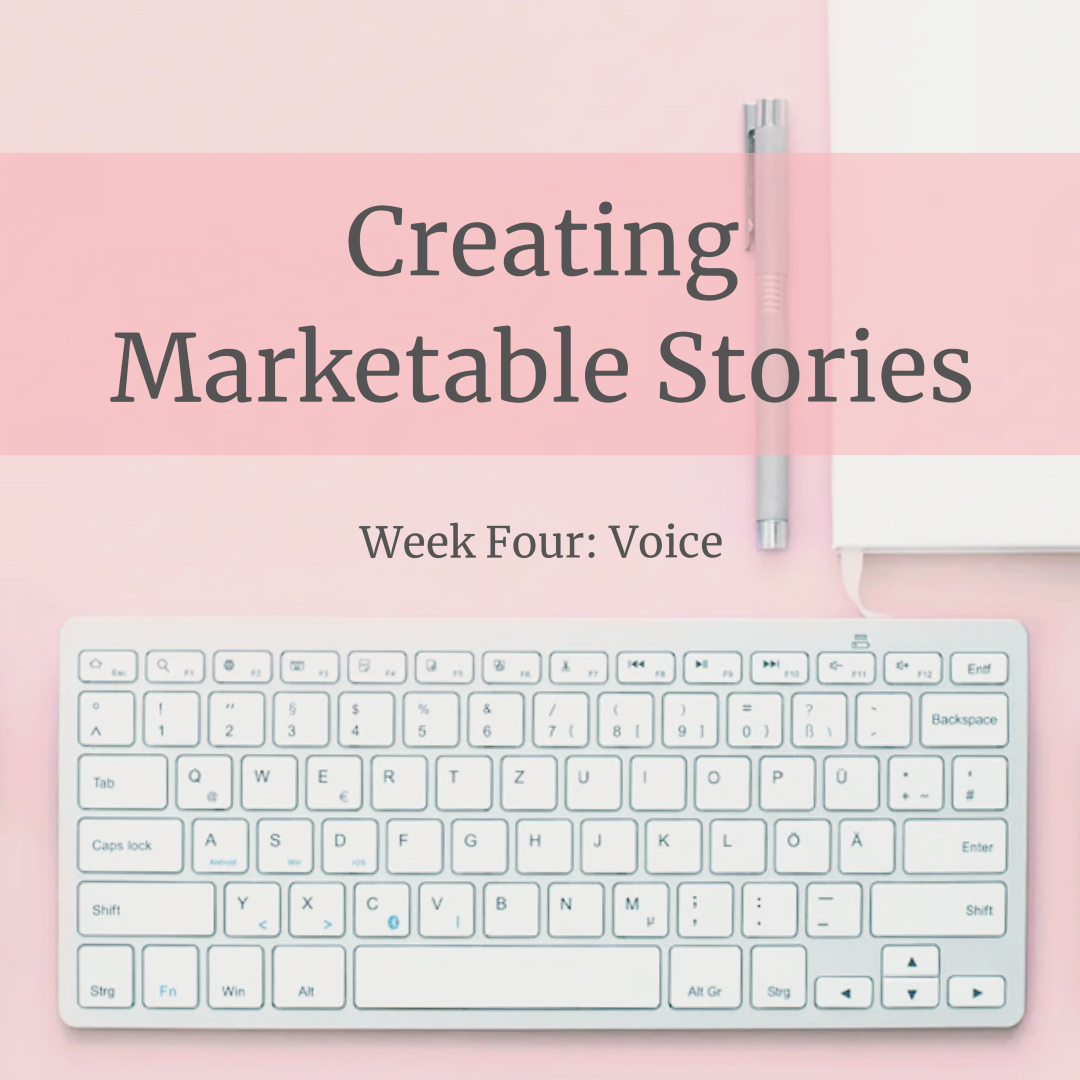Creating Marketable Stories ~ Week Four
Week 4: Voice
What is voice in fiction writing? Voice is the unique way that only you mix your tone, word choice, grammar, and composition to create the story. Go to your bookshelf and pull four books from four different authors. Read the first pages of each and note the different styles, word choice, etc. used by each author to begin the story. Each book sort of has its own personality and you can easily tell them apart, right? That’s voice.
In our last post, we talked about how to grab the reader using emotion. Another way to keep the reader invested is to build characters and story that put the reader right there. Voice includes both how the story is told and each individual character.
Let’s first look at how our voice shows up in the overall story as we tell it:
How you choose to tell the story is your own voice. Are you more descriptive with your settings? Is your word choice flowery or matter-of-fact? Do you write heartwarming scenes? How do your characters sound? Are they believable? Do you write more heavily in dialogue or description? How does your writing sound different from other authors? Your answers are what make your voice. In order for a story to be marketable, it needs a strong voice.
In my own writing, I’ve been told by readers that they feel as if they’re right there with the characters, as if they’re watching a movie. A more visual person myself, I do this by squeezing in the details of the scene or characters in everything they do. That’s my voice. Here’s an example from my never-before-now summer novel:
“I’ve been here my whole life,” he replied.She looked over at him, the wind rippling his shirt, pushing it against his toned chest. She took in the strength that showed in his arms, the coarseness in his hands, and the way he managed to keep the substantial vehicle steady with only his wrist on the steering wheel.His attention flickered away from the road—he seemed to notice her assessment of him. Caught in the act, she turned to the seagrass sliding past the window.In the above scene, we get a visual of him, but not just any visual; we get a glimpse of him through who he is. His toned chest and coarse hands tell us that he does manual work for a living, but the fact that he’s driving with his wrist on the steering wheel indicates how comfortable and relaxed he is in his own skin. Within that moment, we also see the coastal wind and the seagrass sliding past the window. That’s my voice.
In your own writing, pull out a paragraph or two and see if you can describe what makes your voice yours.
Now, let’s look at how our voice can show within in the dialogue:
Read the three examples of dialogue below. Can you tell that all three of these characters are different people?
“Wanna hear something that’ll knock your socks off?” he asked from behind his mirrored Ray-Bans, a smirk playing at his lips.“I fink I’s nevah been anywhere wike dis before,” the freckled boy said with wide eyes as he peered up at the massive house.“Well, if it ain’t Mama and her new Cadillac,” Emogene said, with an indignant squint to her sparkly shadowed eyes, her red lips pursed in disapproval.Using the characters’ words, mannerisms, and description of them, each one has a unique feel. How the character comes through, the specific way that you draw that character—that’s your voice.
Now, I do have editors who suggest different words and phrasing. Because they’re experts in shaping story, 99.9% of the time, I accept their changes. Even with stripping things out to keep a tight story, changing words, moving the story in different directions, the overall voice is still clear. I’ve had countless editors over the years, yet my novels all still “sound” like me. That’s because it takes more than what’s edited to determine your voice. It’s the overall picture of everything we’ve discussed above that makes your book yours.
Join us next week as delve into compelling dialogue! Until then!
© Jenny Hale, 2023
